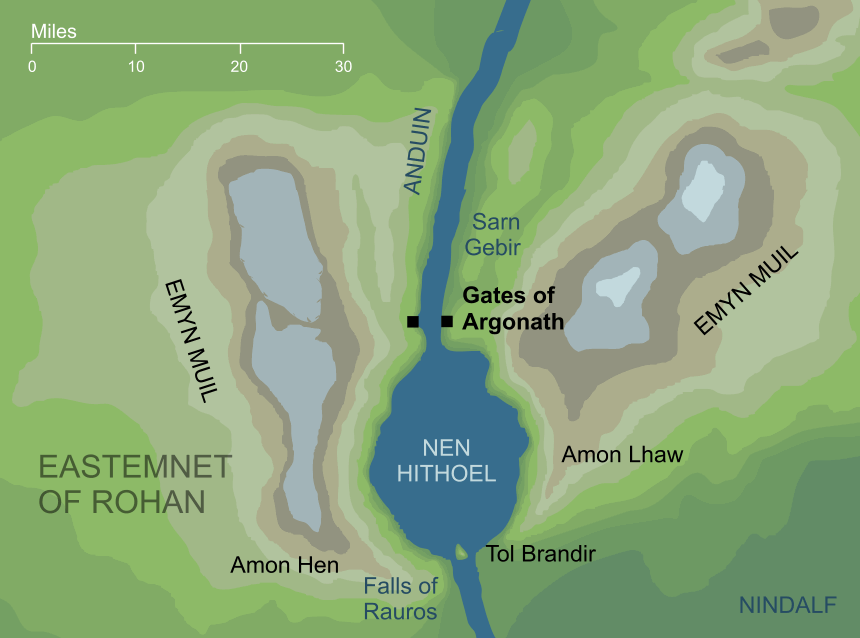- Cities and buildings
- Fields, plains and deserts
- Forests
- Hills and mountains
- Islands and promontories
- Lands, realms and regions
- Rivers and lakes
- Seas and oceans


 |
||||
|


Which personality type are you?
Take the Free mydiscprofile Personality Test to discover your core personality and your ideal job.   Which personality type are you? |
|
Dates
Apparently built in about the year III 1250, but this is open to question1
Location
The northern entrance to Nen Hithoel
Origins
Apparently built by King Rómendacil II (but see note 1)
Race
Division
Culture
Pronunciation
'Argonath' is pronounced 'a'rgonath'
Meaning
Argonath means 'Two kingly stones'
Other names
Indexes: About this entry:
|
Gates of ArgonathThe Pillars of the Kings
As the Great River Anduin flowed southwards into the region of the Emyn Muil, the land rose up on both sides of the river, leaving a narrow passage between two lines of cliffs. Eventually, this river-passage opened out into the wide lake of Nen Hithoel. In ancient days, this was considered to mark the entrance into the kingdom of Gondor, and King Rómendacil II of that realm raised two great monuments to mark the north-gate of his Kingdom. These two huge statues were carved on either side of the river, together known as the Argonath, or Pillars of the Kings. They represented Isildur and Anárion, the sons of Elendil, who had been Gondor's earliest rulers. Notes
See also...Indexes: About this entry:
For acknowledgements and references, see the Disclaimer & Bibliography page. Original content © copyright Mark Fisher 2004, 2008, 2022. All rights reserved. For conditions of reuse, see the Site FAQ. Website services kindly sponsored by Discus from Axiom Software Ltd.Explore team dynamics, relationships, leadership and more with Discus team-building. |